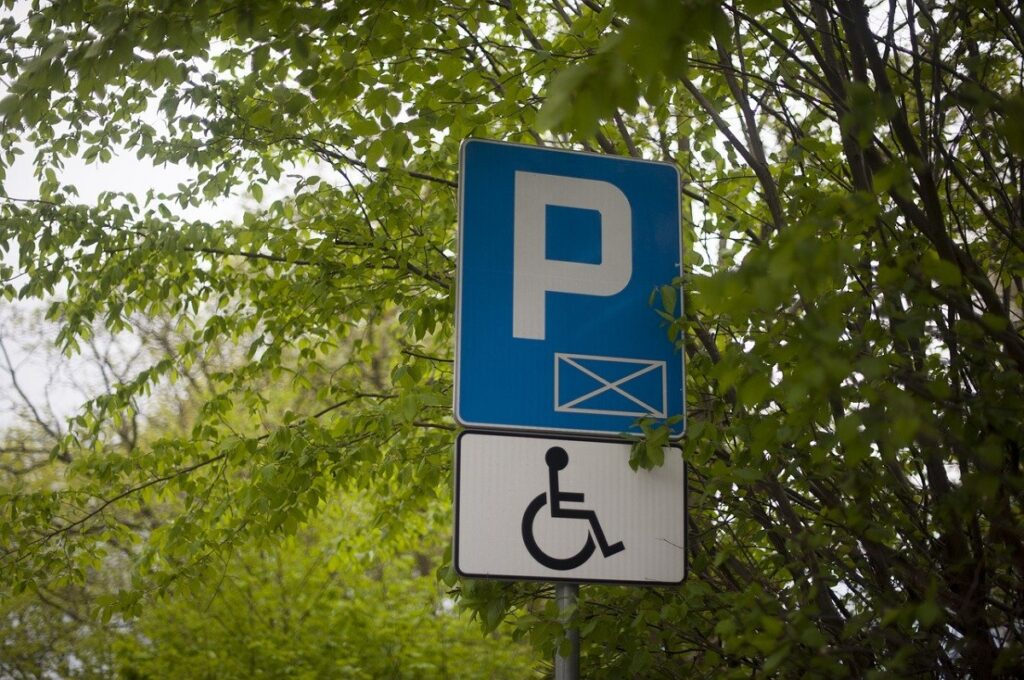In some states, you’ll find that there are parking spaces specifically designated for individuals who require the use of a wheelchair. But what does a wheelchair only disabled parking space look like? Here’s all you need to know about how to find these spots and how to use them to give you convenient access to various places when you’re out and about.
What is a wheelchair only handicap parking space?
Some states and even some individual cities have handicap parking spaces that are for wheelchair users only. That means that other people (even if they have a physical disability) are not permitted to park there. These parking places are meant to ensure that any person in a wheelchair has immediate access to larger, close parking spaces. But what makes a parking spot handicap accessible?
Firstly, these special spots are often marked with signs that say “For wheelchair users only” so people can easily tell which spots are open to them. All standard handicap parking places have signs to mark them (including the International Symbol of Access of a wheelchair). They’re usually level for easy wheelchair access and have at least a 60-inch aisle next to the space so that a wheelchair can move around it with enough room to get around. This extra room is designed so that wheelchair users are able to easily get in and out of their cars.
There are also wheelchair-accessible van parking places that are much bigger so that a person can use a wheelchair lift or ramp if they need to.

What does a wheelchair only handicap parking space look like?
There will be posted signs that clearly let people know when a space is meant to be used by wheelchair users only. These spaces are typically painted in blue and white. The above-mentioned wheelchair accessible van parking places have a white-striped access aisle on the passenger side of the vehicle that is generally around 96 inches wide. This is so that disabled individuals can easily get out of their vehicle without being too close to someone else’s car. These spots are marked with signs that indicate them as van accessible parking places.
In some parking lots, you might find that there are even larger parking spots that allow for two-sided entry. These have the crosshatched access aisles on both sides of the vehicle so that a person can get in and out of their wheelchair on either side, or can access a wheelchair ramp or lift with plenty of space.
Can you get a ticket for parking in a wheelchair only parking place if you don’t need it?
This question is a little tricky to answer, because every state (and even some specific jurisdictions) can enforce parking restrictions in different ways. For example, in some areas, if all of the other handicap parking spaces are taken, you might be allowed to park in a wheelchair only parking place even if you don’t require the use of a wheelchair. However, in some places, you could face getting a ticket (with a possible fine) for parking there if law enforcement sees that you don’t need a wheelchair.
Your best bet is to research handicap parking laws in the city you’ll be in to make sure that you are abiding by any local parking restrictions. That way you’ll always know exactly which spots are available to you. It’s a good idea to steer clear of wheelchair only parking places if you don’t use a wheelchair, so that folks who do need them will have access to the spots.

What do the different colors of handicap placards mean?
The answer to this also varies depending on what state you live in. In most states there are two colors of handicap placards. For example, in California, a blue placard indicates that you have a permanent permit, which means you can use your placard as long as it’s up to date on a long-term basis. A red placard means you have a temporary placard, which usually expires after several months.
In some states, although it’s less common, you could see a third color for a placard that indicates a person qualifies for wheelchair only parking. While this isn’t available in every state in the US, you should enquire with your doctor or your state’s DMV to see which placard is right for you and your needs.
How can you get a wheelchair only handicap placard if you need one?
If you do require the use of a wheelchair, you can check with your DMV during the application process to ask whether they provide people with special placards for wheelchair only handicap parking. They should be able to tell you whether your state has a specific process for getting one.
If you don’t already have a handicap parking permit, work with your doctor to complete the medical certification portion of the application. This allows your doctor to verify that you do require the use of handicap accessible parking places because of a physical disability. You can then submit your completed application to the DMV. Alternatively, you can have a medical consultation online.
Requiring the use of a wheelchair might entitle you to access to specific parking places depending on the area you live in. Do some research (with the DMV or local law enforcement) to determine what the parking regulations are for that particular location so that you’re always on the right side of the law. It never hurts to ask if it means that more information will allow you to have better access. If you don’t use a wheelchair, steer clear of designated wheelchair only parking places wherever possible so that the people who need them will always have access.
Featured image by arembowski on Pixabay
